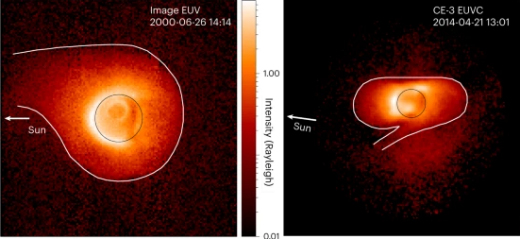SOLAR CYCLE 25 ACTIVITY REPORT FEBRUARY 04/2023
Solar activity has been at low levels for the past 24 hours. The largest solar event of the period was a C3.9 event observed at 02:49 UTC from departing AR3204 (N24W0)
There are currently 6 numbered sunspot regions on the solar disk: AR3201, AR3206, AR3207, AR3208 and new regions AR3209 and AR3210 All of these small sunspots are stable and quiet. Not one poses a threat for strong flares

● Auroral Activity
The geomagnetic field has been at quiet to unsettled levels for the past 24 hours. Solar wind speed reached a peak of 376 km/s at 12:35 UTC on February 03 Maximum planetary index: Kp 3
Aurora Oval

● Current Conditions at 04:40 UTC on February 04
▪︎Geospace quiet
▪︎Geomagnetic conditions now Kp 3
▪︎Solar wind speed record: 329.8 km/sec
▪︎density: 4.26 protons/cm3
▪︎Neutron Counts today: +1.6% Elevated
▪︎X-ray Solar Flare: C2.2 at 00:55 UTC
▪︎Sunspot number: 74 (SN 56 Feb 02)
SpaceWeather.com
SpaceWeatherlive..com
Solar activity has been at low levels for the past 24 hours. The largest solar event of the period was a C3.9 event observed at 02:49 UTC from departing AR3204 (N24W0)
There are currently 6 numbered sunspot regions on the solar disk: AR3201, AR3206, AR3207, AR3208 and new regions AR3209 and AR3210 All of these small sunspots are stable and quiet. Not one poses a threat for strong flares
The total number of sunspots has increased to 74 (26 of these are grouped into 6 active regions) NOAA forecasts for the next 24h: 75% chance for C flares, 5% chance for M flares and 1% chance for X flares. NOAA's forecast has increased the likelihood of C flaresFARSIDE SUNSPOTS: Two large sunspot groups are transiting the farside of the sun. We know because NASA's Solar Dynamics Observatory is detecting their helioseismic echoes. The sun's rotation will turn them toward Earth about a week from now. SpaceWeather.com
● Auroral Activity
The geomagnetic field has been at quiet to unsettled levels for the past 24 hours. Solar wind speed reached a peak of 376 km/s at 12:35 UTC on February 03 Maximum planetary index: Kp 3
Aurora Oval
● Current Conditions at 04:40 UTC on February 04
▪︎Geospace quiet
▪︎Geomagnetic conditions now Kp 3
▪︎Solar wind speed record: 329.8 km/sec
▪︎density: 4.26 protons/cm3
▪︎Neutron Counts today: +1.6% Elevated
▪︎X-ray Solar Flare: C2.2 at 00:55 UTC
▪︎Sunspot number: 74 (SN 56 Feb 02)
SpaceWeather.com
SpaceWeatherlive..com

